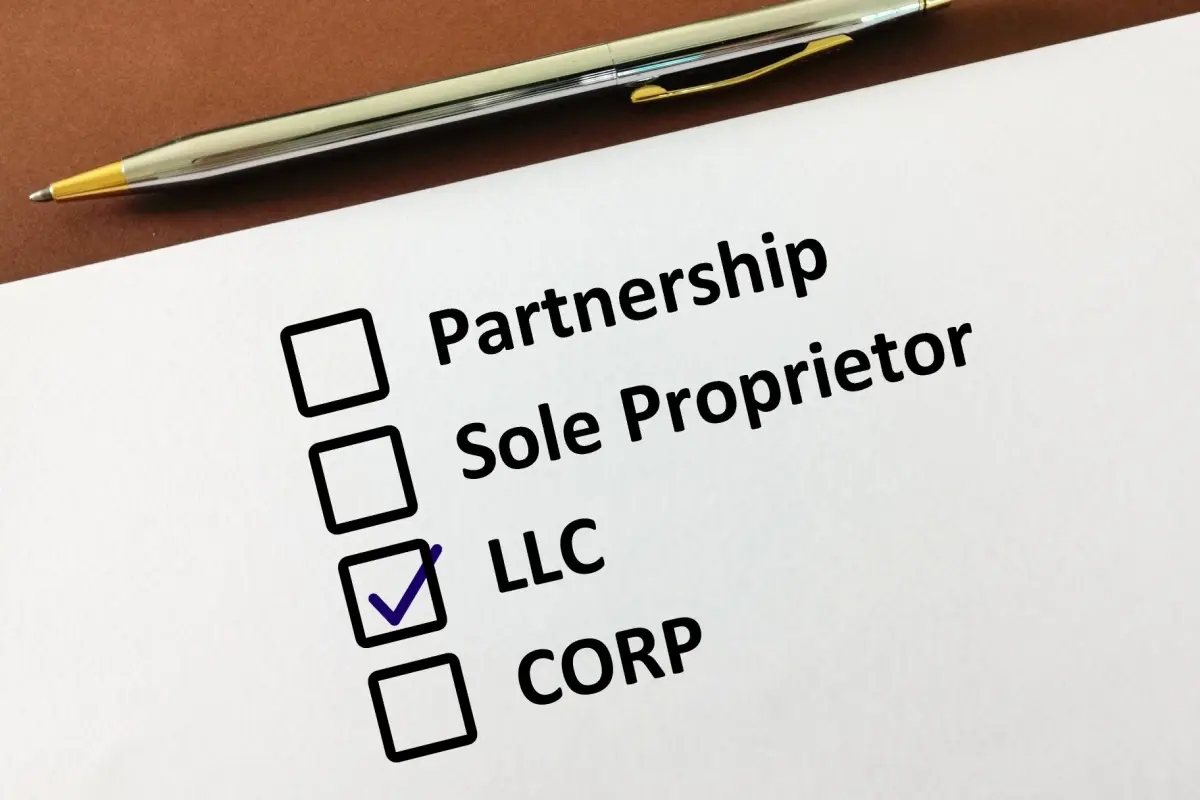If you’ve been thinking about starting a home improvement business, now might be the time to do it. Consumer sales in the home improvement market are expected to grow by 3.2% by the end of 2024. The demand is high for skilled professionals with remodeling, carpentry, painting, or general construction expertise. But you’ll need more than a truck, some tools, and the ability to use them to start a home improvement business.

Entrepreneurship in home repair requires strategic planning, knowledge of the market, and compliance with laws and regulations. Below, we explore how to start a home renovation business, breaking down everything you need to know in a step-by-step guide.
But first, let’s look at the state of the home improvement industry as it is now.
Understanding the Home Renovation Market
The home improvement market was valued at $867.6 billion in 2023. By 2032, that number is predicted to reach $1.26 trillion. Several factors drive this surge. A major one is that consumers demand modern standards of living, and are willing to invest money in such improvements to upgrade and refresh their homes.
Other reports reveal several key home renovation trends. According to the NAHB, nearly 80% of homeowners now consider energy-efficient features a must in their home improvement projects. Popular sustainable renovations include using eco-friendly materials and installing energy-serving elements in homes, such as solar panels and high-efficiency HVAC systems.
Smart home technology has also become increasingly popular as homeowners seek to automate various functions to better control their environment. Some homeowners are comfortable tackling these upgrades themselves, but others may prefer to let a pro do the work. Grasping these current market dynamics should be your first step in your journey to opening a home improvement business. The more you tailor your services to customer demand, the more successful you’ll be in generating business.
Step-By-Step Guide to Starting a Home Remodeling Business
In this section, you’ll find detailed instructions on how to start a home renovation company and get your business off the ground. Creating a comprehensive business plan will help you lay a solid foundation from which to launch your home remodeling company. From there, you’ll secure the necessary permits and licenses, and outline your services before defining the ways you’ll brand and market your business to the world.
Allow us to walk you through every step:
1. Create a Business Plan
The cornerstone of starting a remodeling business is a detailed business plan. A business plan is a 15 to 20-page document that outlines your company mission and objectives, selling strategies, market positioning, and financial forecasts. Here are the elements you’ll want to include in your business plan for a renovation company:
- Mission statement and vision: This should emphasize the long-term aspirations of your business — what your company aims to achieve and the impact it will have in the industry. Remember to choose a name for your remodeling business and refer to it throughout the plan.
- Market analysis: Conduct thorough research and identify the key trends in the current home renovation industry that demonstrate a need for your services. You should know your direct competitors, their service offerings, pricing structures, and market share. This will also help highlight how your services can differentiate you from other businesses in the area.
- Products and services: Whether you plan to address a niche need, like bathroom or remodels, or offer a comprehensive suite of services for whole-home renovations, your business plan should clearly state your skill set. (More on this below.)
- Target audience: Research and identify your potential customers and how you’ll serve them. Get specific on who this is, such as “homeowners in Los Angeles” or “historic homeowners ready to remodel.”
- Clear and measurable goals: List the business metrics you’ll use to measure success using key performance indicators (KPIs). To establish and convey these metrics, use the SMART framework: specific, measurable, achievable, relevant, and time-bound. These targets will help you stay focused, track progress, and make informed decisions to drive your business.
- Financial projections: Estimate your startup costs, including expenses like equipment, licensing, insurance, marketing, and so on. Also include five-year forecasts for your general operating expenses, including salaries, utilities, materials, and maintenance.
- Operational setup: Highlight how you’ll run your day-to-day operations, by detailing your staffing, supplier relationships, inventory levels, and quality control measures. Mention the technologies and tools you’ll use to manage projects, communicate with clients and the team, and handle administrative tasks.
- Risk analysis and contingency plans: Include a section on the strategies you’ll use to reduce risk and have an emergency plan that highlights how your business will navigate through unforeseen challenges.
2. Handle Legal and Administrative Requirements
Focus next on the paperwork you need to register and run your business. Getting all the required licenses and permits squared away at the start will protect you from potential legal issues and help establish your company as a credible business in the area, which helps build trust with your clients. Let’s look at what you’ll need to do to structure your business legally.

Obtain Licenses and Permits
Licensing is mandatory for certain specialized trades, such as HVAC technicians, plumbers, and electricians. You will also likely need a general contractor’s license to oversee and manage renovation projects. Acquiring these licenses requires passing trade-specific exams and obtaining certifications that validate your expertise in that area of work.
Check what licenses and permits your state requires you to have to run and register your business — operating without a license can lead to hefty financial and legal consequences.
While you’re at it, familiarize yourself with the process for pulling required building permits in your area. Many renovation projects require permits to ensure the project’s safety, especially those involving structural changes, additions, or significant alterations to existing systems. Present a detailed project plan to your local building department and follow their guidelines for obtaining a permit for each project you take on that requires one.
Register the Business
Once you possess the proper licenses and certifications, decide how you’ll register your business with the government. The structure of your company can be one of the following:
- Sole proprietorship
- Limited liability company (LLC)
- Limited partnerships (LP) and limited liability partnerships (LLP)
- Corporation, such as a C-corp or S-corp
An LLC is a common setup for most home renovation businesses because it allows you to maintain ownership of the business but your personal assets may not be responsible for business debts and liability. However, while an LLC offers liability protection, there are exceptions, and proper operation is necessary to maintain this protection.

If you plan to operate independently, a sole proprietorship might be your simplest option, but it doesn’t protect your personal assets if the business incurs debt.
We recommend consulting a tax professional to determine the best way to structure your business to your current and future goals. Depending on your business structure, you may need an Employer Identification Number (EIN) from the IRS for tax administration purposes.
And finally, something a bit more exciting. You must name your business to fully register it with your state or local government. Check your local business registry to ensure it’s available before completing your registration.
Get Insurance
Insurance coverage is non-negotiable for a home renovation business because you need adequate coverage to protect your business, employees, and clients. Most home renovation companies will choose general liability insurance or workers’ compensation insurance if they have employees.
Home improvement contractor insurance and required minimum coverage depend on where your business is established, your annual revenue, and the size of the business.
- General liability insurance covers claims related to property damage, bodily injury, and other liabilities.
- Workers’ compensation insurance is mandatory in almost all states, and it provides financial assistance to employees who may suffer work-related injuries or illnesses, covering medical expenses and lost wages.
Other options for insuring your remodeling business include packaging policies like professional liability insurance into your plan, which protects against negligence or faulty workmanship claims. Commercial vehicle insurance can help protect your fleet if your business has company vehicles, and property insurance provides coverage for your offices and operating equipment.
Understand Tax Obligations
As a home improvement business owner, you will be responsible for various taxes, including federal and state income taxes, self-employment taxes, and/or payroll taxes if you have employees. Your state may also levy a sales tax on certain goods and services in your state, and you’ll need to consider this when quoting your projects with customers.

The Internal Revenue Service (IRS) recommends making estimated tax payments quarterly if you expect to owe $1,000 or more in taxes for the year. If you’re self-employed, you can take advantage of self-employment tax deductions by separating business and personal expenses.
3. Define Offered Services and Pricing Strategy
Once you’ve sorted out your legal and logistical requirements, it’s time to nail down the more specific aspects of your business: the services you’ll offer and how much you’ll charge.
Start by assessing your own skills and expertise to outline a scope of work you feel comfortable doing, such as:
- Whole house remodeling
- Kitchen and/or bath remodeling
- Handyperson services
If your skill set allows you to get even more specific, you might offer services commonly associated with home improvement projects, like plumbing, flooring and carpeting, painting, drywall, roofing, and more. Or, you can brainstorm a plan to grow into these offerings as you expand, hiring subcontractors you trust to perform these trades.
Refer back to your business plan’s market and customer analysis to identify the most in-demand services in your area, ensuring that your offering aligns with local homeowner needs and preferences. Be honest with your ability to complete jobs homeowners want — you can stand out among competitors by offering excellent service and gaining a good reputation in those areas.
Then, define your contractor pricing strategy. Most home renovation companies use the following pricing structures:
- Fixed pricing: Setting a predetermined price for specific services or projects based on the market. This is easy to manage and allows customers to budget for renovations more accurately.
- Unit pricing: Itemizing costs for each portion of the project. This method allows you the flexibility to add to the estimate when extra work is required or the scope changes.
- Cost-plus pricing: Calculating the total costs you incur (materials, labor, and overhead) plus your desired profit margin. This method covers all expenses and provides a consistent profit margin for services that can be closely estimated.
- Time and materials pricing: Defining a per-hour or per-day rate that accounts for your labor, materials, and time. This is a straightforward method that ensures your pricing considers all expenses required to complete the project
No matter how you price your business services, be sure to consider your expertise, quality of work, and the other unique benefits you offer. The right pricing strategy may differ from one business to another, and it’s all about balancing goals with market expectations.
4. Set Up Daily Operations Processes
The next step is to establish the core components of your business, like the equipment, employees, and technologies you need to work — in other words, how you’ll provide your services. Here’s what we suggest you consider:
Acquire Necessary Equipment and Tools
Of course, you’ll need to invest in the right remodeling tools and equipment to execute home improvement projects. Create a comprehensive list of tools required for delivering your services. Here’s a remodeling business startup checklist:
| Basic Tools | Hammers, Screwdrivers, Pliers, Tape Measures |
| Power Tools | Drills, Saws, Sanders, Nail Guns, Impact Drivers |
| Specialized Equipment | Tile Cutters, Drywall Tools, Painting Equipment |
| Safety Gear | Safety Glasses, Hard Hats, Gloves, Ear Protection, Harnesses |
| Service Vehicles | Vans, Trucks, Utility Trailers |
Investing in high-quality tools can save you money in the long run by reducing maintenance costs and downtime. Leasing or renting expensive or specialized equipment as you need it can be more affordable than buying it outright.
Hire and Train Employees
As your business grows, you’ll probably need to recruit skilled professionals for the services you provide. Ensure your team members are trained in Occupational Safety and Health Administration (OSHA) regulations and encourage them to maintain their expertise by attending industry workshops and obtaining work-related certifications.
You can scour job boards like Indeed or LinkedIn to find talent or talk with local trade and vocational schools to find young employees looking to grow their skills. When screening candidates, look for a blend of technical skills, experience, and industry certifications. Your team will need to know how to communicate with customers and their teammates, so you’ll need to prioritize soft skills like professionalism, courtesy, and punctuality when training employees.
Establish Supply Chains
Whether you’re a one-person company or you employ a team of contractors, it’s important to establish partnerships with suppliers who offer high-quality materials, competitive pricing, and reliable delivery schedules.
Choosing local suppliers may help reduce transportation costs and support the community at the same time. That said, avoid depending on a single supplier and build relationships with several sources so you’re not hindered by supply shortages and price fluctuations that are bound to happen over time.
Develop Operational Procedures
Establish standardized operational procedures for consistency and quality control and document them. These will help ensure your team understands their responsibilities and that you perform tasks consistently from client to client. For example, you could implement checklists and inspection protocols to maintain workmanship standards and create a feedback process to ensure each customer is happy with their service — and potentially hire you again. And don’t forget about developing a comprehensive safety plan that covers emergency responses, equipment handling, hazard identification, and incident reporting.
If you have a team, find ways to keep the lines of communication open. This includes regular meetings, progress reports, and updates on project milestones (technology and software can help here).
Implement Technology and Software Solutions
There’s no need to keep every process manual. As you grow, you’ll need to find ways to streamline operations and enhance customer satisfaction. This is where small business software comes in. Here are a few software solutions you should consider integrating into your business model:
- Project management software, such as Buildertrend or Procore, helps you manage and document project schedules, tasks, and budgets.
- Accounting and invoicing software, such as QuickBooks or Xero, simplifies invoicing and expense tracking. These programs also help automate small business payroll financial elements like tax preparation.
- Customer relationship management (CRM) software like JobNimbus and Insightly can automate client interactions, leads, and general relationship management. You can also save client information and create notes that allow you to follow up on sales opportunities if a client isn’t ready to pull the trigger.
- Booking software like Calendly, Square Appointments, or Microsoft Bookings, integrate with your email or other software solution to allow customers to book appointments online. You can also link these tools on your website or social media to give customers an even easier way to schedule with you.
- Design and visualization tools like SketchUp or AutoCAD can be a great way for you to offer clients a 3D model and rendering. Elevated services like this help demonstrate your professional abilities and give clients a visual representation of what you’ll do for them.
- Point-of-sale (POS) software to offer financing to customers. Connecting your customers to more flexible payment solutions makes your services more accessible to those who need financing for their home improvement projects. This, in turn, increases your sales and helps you attract more clients.
5. Create a Brand and Market It
Last but not least, it’s time to promote your business and brand to potential clients. Start by creating a professional logo. This will help you establish a consistent visual identity across all your marketing platforms, such as your website, social media, emails, business cards, and vehicles.
Home renovation companies primarily depend on the local market, so don’t overlook physical marketing strategies as a way to generate local buzz. Hand out fliers in your neighborhoods and utilize billboards to market your services. Targeted social media campaigns — ads that only show in your local community — are a cost-effective way to showcase your services and share customer reviews.
Finally, it’s important to dedicate some time and effort to networking, as building relationships with realtors, suppliers, and other professionals can lead to valuable referrals and collaborations.
Mistakes to Avoid When Starting a Home Renovation Business
As you take this path, you’ll also encounter some pitfalls along the way. Here are a few common mistakes entrepreneurs make starting a remodeling business and the steps you can take to avoid them:
- Underestimating the initial costs and capital required to start a business. A home improvement business is not a cheap endeavor, so ensuring you have enough money to fund your startup costs is crucial. The U.S. Small Business Administration has a startup costs calculator you can use to estimate how much money you’ll need to start a business.
- Mismanaging funds. Poor financial management can lead to revenue shortages and tax issues, threatening the sustainability of your business. Keep accurate financial records by investing in a robust accounting system right away.
- Charging outside market rate. If you don’t take the time to research the market rates, you could end up charging too much, or worse, too little. This will make it hard for you to attract clients and earn a profit. Revisit your pricing structure each year to ensure your business remains competitive.
- Overextending your service offerings. Trying to offer every possible home improvement service can spread your resources thin and reduce the quality of your work. Instead, launch your business by specializing in services you know you can complete perfectly so you build a trustworthy customer reputation. Plan to hone your skills over time, or hire a team of specialists to help you expand your services.
- Ignoring customer feedback. Customers aren’t afraid to express their opinions online and to their friends. Build a customer feedback process into your business model, and dedicate time to respond to all reviews. Analyze feedback to inform ways your business can improve. Building a strong reputation and client base can help you grow over time.
- Isolating yourself from others in the industry. Attending industry events and workshops and joining professional associations are key for forming an extensive network of mutually beneficial partnerships. The more you network, the better your company can position itself as a reputable business in the area.
- Limiting your marketing to word-of-mouth referrals. While referrals are a great way to generate business, marketing in several channels is important for increasing visibility in a competitive market. At a minimum, this should include a professional website, an active social media presence, and local advertising.
Final Thoughts
Starting a home remodeling business requires innovation, hard work, and dedication. If you follow the steps outlined above and commit to delivering exceptional service, you can build a reputable home improvement brand that stands out in the market.
FAQs About Starting a Renovation Business
Below, we’ve answered some commonly asked questions about starting a home remodeling business.
What Do I Need to Start a Remodeling Business?
To start a remodeling business, you need a comprehensive business plan that outlines your services, target market, and pricing strategy. You must register your business with the state and secure permits to operate in your area. Home remodeling companies also need insurance to operate legally. After you tackle the legal requirements of starting a business, you can invest in quality tools and equipment required to perform your trades, as well as the technology systems you’ll need to handle all accounting and invoicing processes.
How Profitable Is a Home Improvement Business?
The profitability of a home improvement business depends on several factors, including location, services offered, competition, and operational efficiency. Most home improvement businesses are considered profitable if they have a profit margin between 8% and 25%. Over time, businesses that provide exceptional service and manage their business smartly can achieve higher margins.
How Much Does It Cost to Start a Home Improvement Business?
The initial investment costs of a home improvement business can range between $50,000 and $100,000. But it’s also recommended to save enough capital to operate the business for the first two years, even if you don’t make a profit. Initial expenses include registering the business, obtaining necessary permits and licenses, insurance premiums, purchase of tools and equipment, and marketing expenses.


